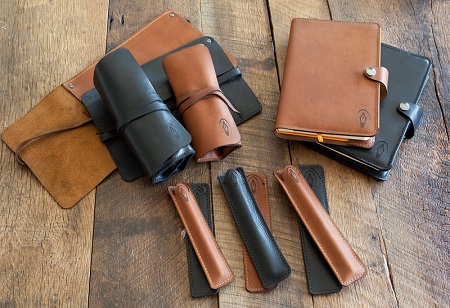One of the most largely traded products in the world is
leather and the surge in demand for it is driven by the footwear & fashion industry. Other than these, the automotive industry, as well as the furniture & interior design industries, also demand leather. The leather industry to a significant extent relies upon the by-products of the dairy & meat sectors for more than 95 percent of its raw materials.
The
Indian leather industry holds a substantial position in the country’s economy. Also, it is consistent in its high export earnings and is one of the top 10 foreign exchange earners for India.
The surge in demand for luxury goods
The demand for luxury goods has also gone high, owing to the surge in disposable income of people. This is because, the goods often show a sense of accomplishment to millennials, offering them higher self-esteem moreover an upward thrust in the Asian countries can be seen as they are renowned to spend largely on luxury goods. And, coming to the case of the personal luxury segment, leather goods are the fastest-growing sector that attracts extravagant customers.
“In the last few years, the genuine leather industry has gradually been replaced by artificial leather be it in footwear or automotive segment. The market is mainly driven by rising consumer disposable incomes, improved living standards, and changing fashion trends,” says Suresh Poddar, Managing Director, Mayur Uniquoters.
Sustainability
Since leather is not an animal-friendly option, it is a controversial fiber. Furthermore, owing to the social as well as environmental concerns that are related to leather are most often linked to the tanning process & toxic chemicals are used to transform the animal skins into wearable leather. Factories use these substances in the process and dump chemicals into rivers, and other water bodies which in turn leads to water pollution. Also,
most tanning factory workers across the globe do not protect themselves from these harsh chemicals by wearing adequate protection. And, as a result, they suffer from eye, respiratory and skin diseases, cancer, and many others owing to their exposure to chemical substances.
While conventional leather is criticized for its environmental impact due to the tanning process, leather can also be eco-friendly. Although there are not numerous options in the market yet, a few options do exist. Some of these include the Ecolife by Green Hides which creates eco-friendly, chrome-free leather in Italian tanneries which recycle as well as purify wastewater.
Some of the tanneries use a closed-loop, low emission tanning, and all ingredients used in production include recycled, reclaimed, and purified ingredients. These tanneries also use solar power, preventing over 165000 pounds of carbon-dioxide emission every year. Lastly, renewable, safe and sustainably manufactured leathers render new life to nature’s fabric through beautiful designs.
Leather possesses qualities that are recognized in prestige goods
While it is imperative to recognize that leather substitutes will offer an entirely consistent surface appearance & advantages in cut-components yields, it is also highly crucial to understand that substitute materials perform better than leather in one or selected properties. However, leather renders the qualities which are recognized in prestige goods – fashion statements, value, & individuality.
The total combination of properties and scope of leather in prestige products is highly significant while it is a natural product, substitute materials may render advanced properties in certain areas. Taking this into consideration, it is crucial that leather shouldn’t compete with synthetic materials as it places a demand on innovation & development.
It is most important to understand as well as appreciate the value of designers since they to a greater extent influence fashion as well as product demand. It is also essential to recognize that designers do not want to be restricted to synthetics materials, or heavily coated leathers of limited scope.
Leather will always offer designers as well as consumers an attractive & flexible alternative to mass manufacturing & materials, while the renewability factor of leather is a major strength as it is completely based on unavoidable & troublesome by-product which is continuously generated from other industries.
The road ahead
“India should aim to achieve more than $10 billion worth of leather exports by 2025,” Union Minister of Commerce and Industry, Piyush Goyal, stated while addressing an event of the Council for Leather Exports (CLE). Translating from a raw material supplier to a value-added product exporter, the leather industry of the country has grown drastically The United States of America, Germany, United Kingdom, Italy, France, and many others are some of the major markets for Indian leather & leather products.
